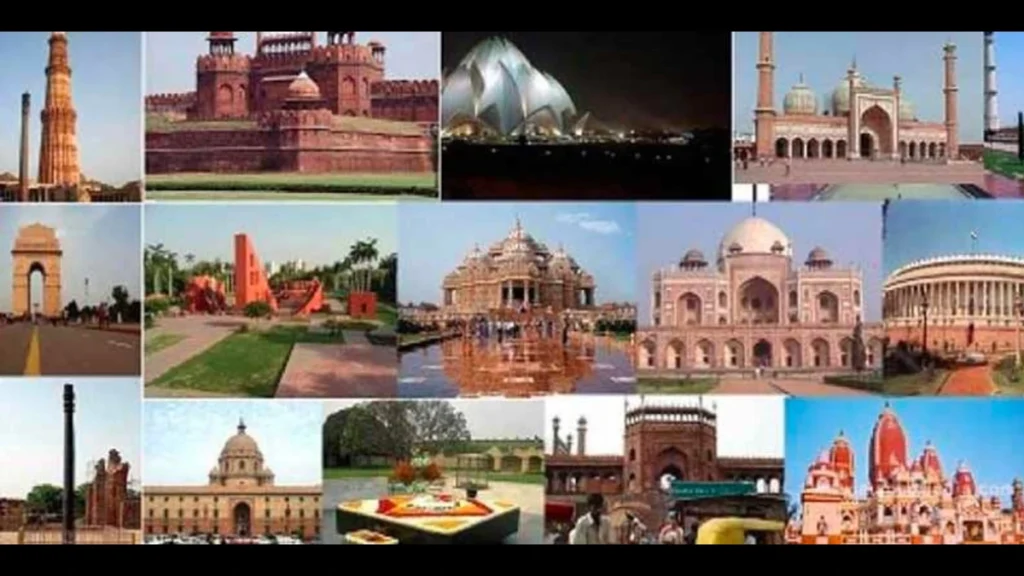Delhi History and Diverse Culture 2025
Delhi city is known for its ancient monuments and temples, such as the Red Fort and Qutub Minar, which are UNESCO World Heritage Sites.

Exploring the Rich History of Delhi
Delhi, also known as the National Capital Territory of India, is a city located in the northern region of India. It is considered to be one of the oldest inhabited cities in the world, with a history dating back to at least the 6th century BCE.
The city has served as the capital of several empires and dynasties, including the Mughal Empire.
It is a melting pot of cultures and traditions, with a diverse population of over 25 million people. The city is a blend of the old and the new, with ancient monuments and temples existing alongside modern skyscrapers and shopping malls.
The city is also known for its delicious street food, which is a reflection of its rich culinary heritage.
One of the most popular tourist destinations in Delhi is the Red Fort, also known as the Lal Qila. Built in the 17th century by the Mughal emperor Shah Jahan, the fort is a UNESCO World Heritage Site and a symbol of India’s rich cultural heritage.
The fort is also the site of the Independence Day parade, held annually on August 15th to commemorate India’s independence from British rule.
Another popular tourist destination in Delhi is the Qutub Minar, a 73-meter-tall tower built in the 12th century. The tower is a UNESCO World Heritage Site and the tallest brick minaret in the world.
The Qutub Minar is also surrounded by several other ancient monuments, including the Iron Pillar, the Alai Darwaza, and the Quwwat-ul-Islam Mosque.
The city is also home to several other historical monuments and temples such as Jama Masjid, Lotus Temple, India Gate, Raj Ghat, Gandhi Smriti and many more. These monuments are not only important for their historical significance but also for their architectural beauty and cultural importance.
It is also known for its vibrant street markets, such as Chandni Chowk, Connaught Place and Sarojini Nagar. These markets are popular among locals and tourists alike, offering a wide range of products including traditional Indian clothing, jewelry, and handicrafts.
Delhi, the capital of India, has a rich and diverse history that stretches back thousands of years, making it one of the oldest cities in the world. Its history is a tapestry of rulers, empires, and dynasties, each leaving a lasting impact on the city’s culture, architecture, and way of life. From ancient times, when it was known as Indraprastha in the Mahabharata, to the Mughal era, and British colonial rule, Delhi has seen the rise and fall of several civilizations.
Today, Delhi is a dynamic metropolis that embodies the diversity of India. The city is home to a rich mix of cultures, languages, and traditions, drawing people from across the country. The historical landmarks such as the Red Fort, Qutub Minar, and Humayun’s Tomb stand as silent witnesses to the city’s glorious past, while the bustling markets, vibrant festivals, and modern infrastructures highlight its evolving identity.
The festivals of Delhi, such as Diwali, Eid, and Holi, are celebrated with great enthusiasm and unity. The city’s cuisine, with its rich flavors and regional influences, further underscores its diversity. In 2025, Delhi continues to thrive as a melting pot of history, culture, and modernity, embodying the spirit of India’s past and its promising future.
Top 10 points on delhi
- Delhi is the National Capital Territory of India and one of the oldest inhabited cities in the world.
- It has served as the capital of several empires and dynasties, including the Mughal Empire and the British Raj.
- Delhi is a melting pot of cultures and traditions, with a diverse population of over 25 million people.
- The city is known for its ancient monuments and temples, such as the Red Fort and Qutub Minar, which are UNESCO World Heritage Sites.
- Delhi is also known for its vibrant street markets, such as Chandni Chowk and Connaught Place, offering traditional Indian clothing, jewelry and handicrafts.
- The street food of Delli is a reflection of its rich culinary heritage and is a must-try for any food lover visiting the city.
- Delhi has a rich art and culture scene, with numerous museums, art galleries, and cultural centers.
- The city is divided into three main areas: Old Delli, New Delhi and Lutyen’s Delhi, each with their own unique characteristics and attractions.
- It is also known as “Dilli” and “Hindustan” which means “Gateway to India”
- The National Capital Region around Delhi is one of the most populous in the world and is home to over 50 million people.
Read More :-
Delhi History, Culture, Modernity
You can search information on our website.
Tags:
Delhi
National Capital Territory of India
Oldest inhabited cities
Mughal Empire
British Raj
Tourist destinations
Red Fort
Lal Qila
UNESCO World Heritage Site
Qutub Minar
Jama Masjid
Lotus Temple
India Gate
Raj Ghat
Gandhi Smriti
Street markets
Chandni Chowk
Connaught Place
Sarojini Nagar
Street food
Art and culture scene
National Museum
National Gallery of Modern Art
National Handicrafts and Handlooms Museum
Indian culture and history
Monuments and temples
Skyscrapers and shopping malls
Culinary heritage
Vibrant street food
Rich art and culture scene
Historical significance
Architectural beauty
Cultural importance
Food lover
Street food vendors
Chaat and samosas
Biryani and kebabs
Rich history and culture
Diverse range of attractions
Modern skyscrapers
Shopping malls
Art galleries
Cultural centers
National Capital Region
Lutyen’s
Dilli
Hindustan
India.
